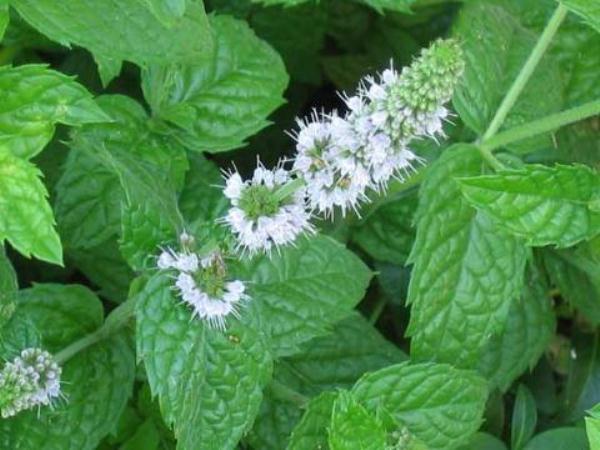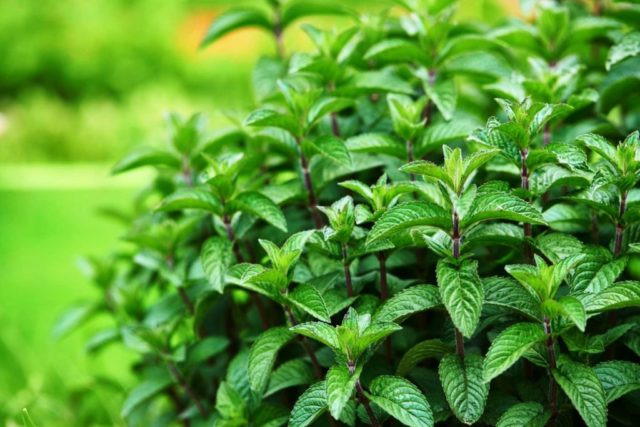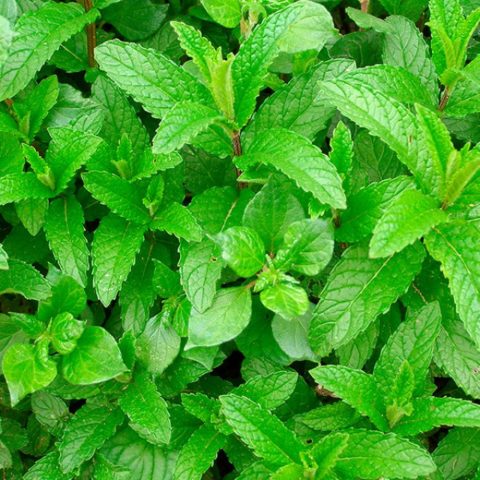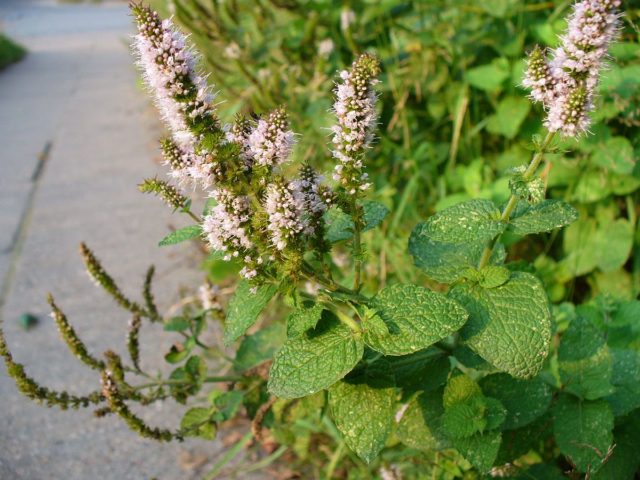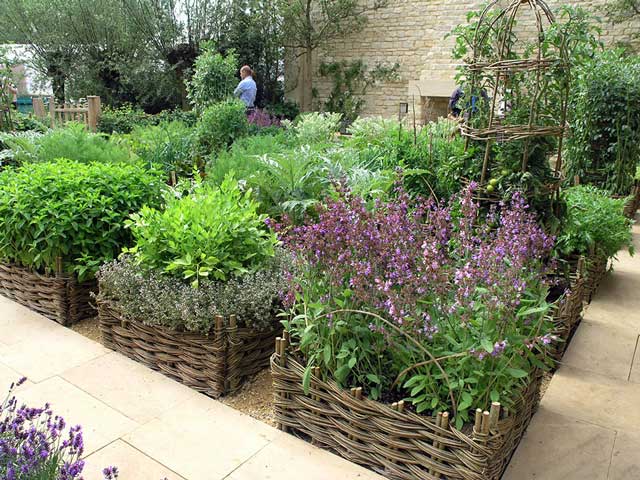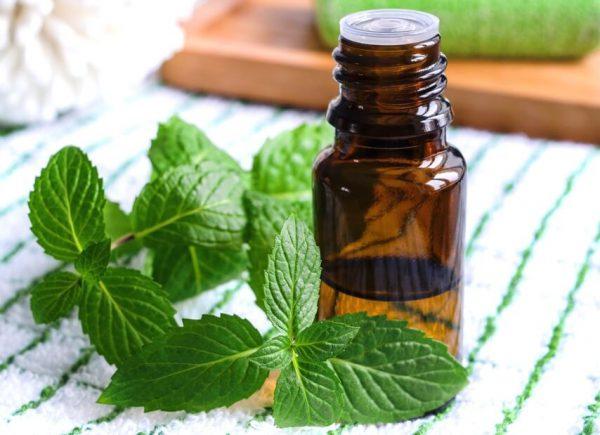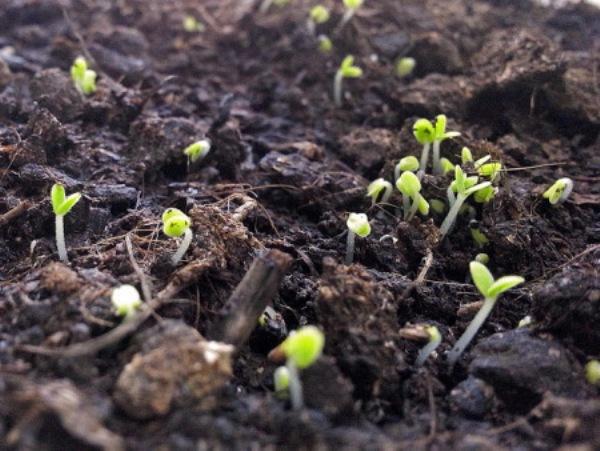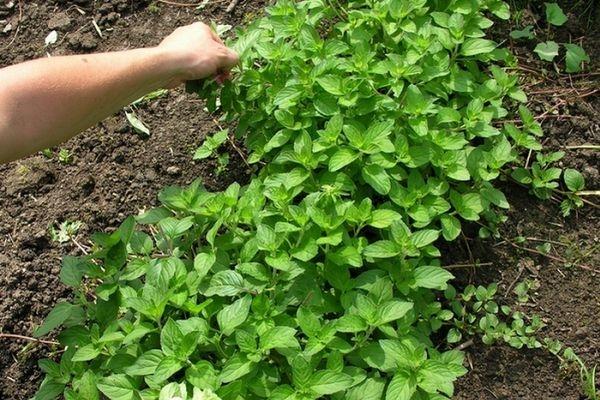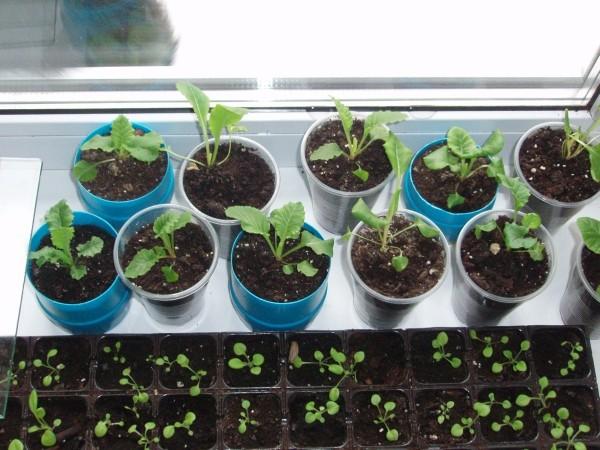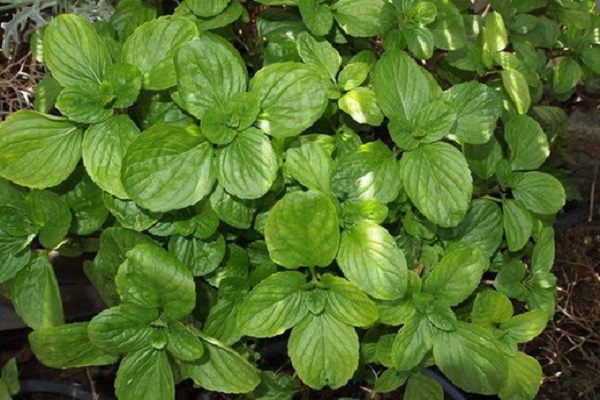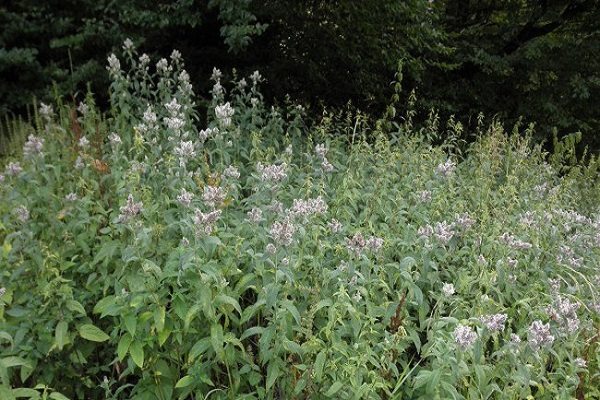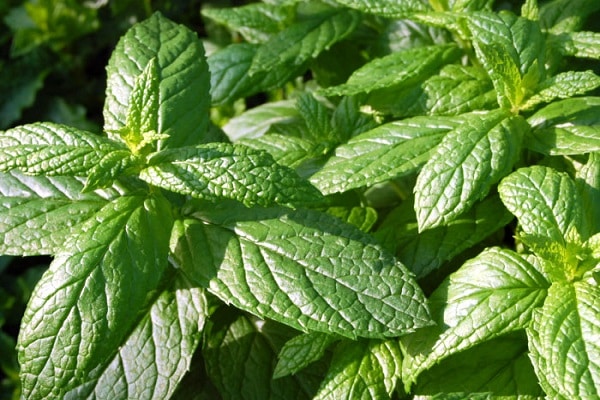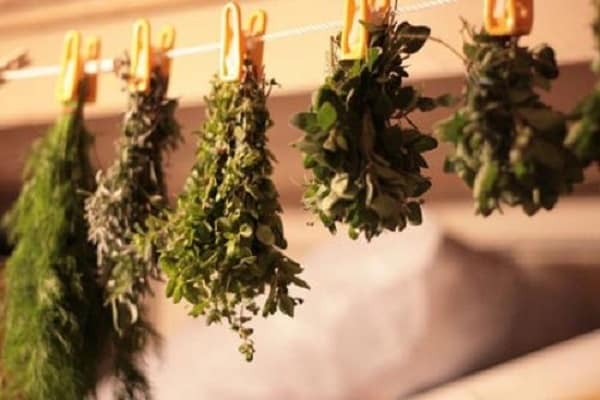Content
Spearmint is considered the most common representative of a large family. The plant grows in a wild and cultivated form. Many gardeners specially grow mint on their plots to repel pests, make aromatic teas, and use them for medicinal purposes.
What does garden mint look like?
Outwardly, most varieties of mint have similar features. However, each variety has unique characteristics. Spike mint is also called garden mint. The plant has an even long stem. The leaf is elongated, slightly oval, up to 7 cm long. The width of the leaf blade reaches 2 cm. The photo shows garden mint during the flowering period. Small flowers in groups create a spikelet at the top of the stem. The color of the petals is snow-white, sometimes with a pink tint. The height of one flower is 3 mm.
The herbaceous garden plant is characterized by intensive growth. The stem is capable of stretching from 30 to 100 cm per season. The leaf plate is wrinkled, the edges are serrated.
Varieties and varieties of garden mint
The common people used to call mint more often peppermint or garden mint, which is not entirely true. These are completely two different varieties, and there are about 40 varieties in total. Most often, the following types of garden mint are found on home plots:
- Peppermint is high in menthol. The culture is a hybrid obtained by crossing garden and aquatic grass. The plant is considered medicinal. It is used in medicine for the production of drugs that treat diseases of the heart, nervous system, respiratory system and other ailments.
- In spicy garden mint, menthol is poorly expressed. This is its main difference. In addition to spicate, the culture is also called field or meadow. In nature, the plant is found on lawns near water bodies, any other places where moisture is present. Due to the low menthol content, garden culture is more often used in cooking, cosmetic preparations are made from it.
- Fragrant mint leaves more rounded. A plant with a pronounced specific aroma. The culture is popular with bakers, and is also used for making tea, alcoholic tinctures.
- Lemongrass or lemon balm is not a mint variety, but the plant is often referred to as garden lemon mint. The culture is widespread among gardeners, found in almost every yard. Mint is used for medicinal purposes, aromatic tea is brewed.
Other types of garden mint are less common and less in demand in widespread use.
How spike mint reproduces
Horticultural crops are propagated by dividing the bush, layering and seeds. The first two methods are considered to be the simplest and most reliable. If you have a desire to start a spearmint on your site, just ask the neighbors to dig out a bush.It can be planted in its entirety or divided into several parts so that each separated plant has a full root. The culture takes root in moist soil and quickly develops its root system. The garden mint will flourish the next year. It still has to be limited, otherwise the plant will crush neighboring crops.
Growing spearmint seeds is a complex process. First, the grains are sown in February in pots of soil or peat. The standard process of growing seedlings is in progress for two months. Grown and hardened young plants of spike mint are planted in the spring in the beds. If desired, a few horticultural seedlings can be left to grow in a pot on the windowsill.
The video tells in detail about sowing mint:
What is the difference between garden mint and peppermint
Distinctive features of popular varieties are shown in the table. If we talk about the main difference between spearmint and peppermint, then it lies in aromatic substances. Garden spike crops are less aromatic. When chewing the leaf, the minty taste in the mouth quickly disappears. Peppermint contains a lot of menthol. After chewing a leaf, there is a feeling of cold in the mouth for a long time.
What is the scent of garden mint
Spearmint flavor is similar to menthol, but mild. It is not coldness that is felt in the mouth, but a sweetish aftertaste. The scent freshens the breath when chewing the leaf, but does not clog it with cold.
Healing properties of spearmint
Despite the limited menthol content, spearmint has medicinal properties. Garden culture is used to eliminate nausea, headache and toothache, and to calm the nervous system. Infusions help remove sand from the kidneys, disinfect wounds, and strengthen the gums. Spearmint menthol has a freezing effect on a sore joint or area of the body affected by a shock.
The use of spearmint
The field of application of the garden culture is so extensive that it is impossible to imagine many medicinal and cosmetic preparations, culinary products without its participation.
In pharmacology
Since the medicinal properties of garden mint extend to many human organs, pharmacological companies use it to make tablets, tinctures, and aerosols. The culture is a part of biologically active additives (BAA). On its basis, drugs are produced for the treatment of the respiratory tract, nervous and cardiovascular systems.
In folk medicine
Folk healers from garden culture make decoctions, infusions, oil, use fresh leaves of the plant. There are many recipes for diarrhea, constipation, headache and toothache. Peppermint oil is used as an antiseptic, astringent and anesthetic. In folk medicine, the garden plant is used for childbirth, the treatment of female diseases.
In cosmetology
Women use fresh mint leaves to make face masks. By adding various ingredients, they prepare compositions for oily and dry skin, getting rid of acne. Peppermint extract is often found in creams, shampoos, and detergents.
In mass production
In cooking, aromatic mint leaves are used as a spice. They are added to baked goods, first and second courses, sauces, salads. Popular mint desserts, carbonated drinks, sweets. Spearmint menthol is used as a flavoring agent for cigarettes, tea, and alcoholic products.
Location on
The garden plant has a good decorative effect. Spearmint is planted along the paths, on mixborders and rock gardens. The culture is considered a good honey plant, and the smell of menthol scares away harmful insects from the site.
Landing rules
In one place, decorative garden mint can grow for many years. The site must be selected immediately, so as not to transplant later. The roots remaining in the ground for the next season will give new growth, which is quite difficult to get rid of. The place is selected lit in partial shade, preferably damp. Garden culture grows under trees, but does not develop well. The plant stretches out on thin stems and grows small leaves.
If the area is not wet, the mint plantings will need to be watered frequently. The soil is preferable loose, fertile with good water permeability. Sandy loam and loam are great. If the terrain is swampy or the groundwater is high, a drainage layer 15 cm thick is arranged on the garden bed.
Spearmint can be grown in the previous legume habitat. It is undesirable to plant it near vegetables, root crops, fruit and berry bushes. Firstly, spraying with insect and disease chemicals cannot be performed on a specific plant. The diffused mist will fall on the leaves of the spearmint and cannot be used temporarily. Secondly, the rapidly growing root system of the spearmint will clog the surrounding plants.
The optimal time for planting a garden plant is spring or autumn. If the seedlings grow in a flower pot, they can be sent to the garden even in summer. The seeds are bought at trusted retail outlets. Sowing is carried out in separate cups or in a common container. The seeds are buried in the ground to a depth of 5 mm. Seedlings are grown from February until the onset of stable heat outside.
Planting material is planted in the holes, watered abundantly with water. The ground is mulched from above to retain moisture. A curb tape or pieces of slate are dug in along the contour of the bed to limit the spread of roots over the site.
Growing garden mint
It is not difficult to care for the plantings of speckled mint. The plant needs regular watering, otherwise the stems will develop poorly. If the area is dry, water can be poured every day. The optimal watering time is late evening, but before dark.
There is no need to feed the garden culture. Spikelet mint grows well on fertile soil. Chemical fertilizers can change taste and aroma. If the site is depleted, once in the spring it is watered with a weak solution of complex fertilizer.
To form a bush, pinching is performed. Cutting off the top encourages the growth of side shoots. If spikelet is grown for leaf harvesting, peduncles are removed at the stage of formation.
The soil in the beds is loosened shallowly. Weeds are removed manually. This specificity of care is associated with the superficial location of the root system. Usually weeds are pulled out at the stage of mint growth. When the bushes gain their strength, they themselves will drive out the weeds.
How to get rid of garden mint on the site
The excellent vitality of a garden plant is a plus and a minus at the same time. When the need to get rid of it comes, it is not easy to do it. Pulling by hand or digging with a shovel is not always successful. The remaining small roots in moist soil instantly sprout new shoots.
Herbicides help to reliably get rid of the annoying plant, but they can not be applied everywhere. When sprayed, the preparations fall on the leaves of neighboring crops, and they also die. If the use of herbicides is not possible, the area with mint is covered with old linoleum or roofing material. It will disappear under the opaque material.
Pests and diseases
Spikelet mint is rarely exposed to diseases and destruction by pests, but sometimes such cases occur. The problem of dealing with ailments is the limitation of the use of chemicals. The leaves cannot be used as a spice.Better to try to prevent the problem. For example, rust is a common disease. It arises from excessive moisture. The bushes need to be thinned for better ventilation, and the intensity of watering should be reduced.
The appearance of white bloom on the leaves indicates the presence of powdery mildew. The bushes are sprayed with a solution of ground sulfur. Anthracnose is recognizable by brown spots. For treatment, the plantings are treated with a solution of Bordeaux liquid. In order not to wait for the appearance of ailments, they resort to early harvesting - in July.
Mint mites and leafhoppers are considered dangerous crop pests. Here you cannot do without the use of insecticides. For the duration of the drug's action, the leaves cannot be used for any purpose.
When to harvest garden mint and how to dry
The timing of the preparation of the spice is determined visually. The stems are cut when they reach a length of 25 cm. Harvesting time usually falls in July-August. Cut off 2/3 of the plant so that the bush regenerates faster. Optimally cut the stems of the mint before flowering. At this time, the leaves accumulate the maximum dose of aroma.
How to store dried garden mint properly
After harvesting, drying is considered the best way to preserve it. The finished product is stored in bundles suspended from ropes under the ceiling of a dry barn. Leaves can be crushed into a fine powder, packaged in plastic bags or glass jars.
Conclusion
Spearmint retains its medicinal properties and aroma even when dried. The storage duration of the crop depends on the conditions created, but it is better to renew the stocks every season.
